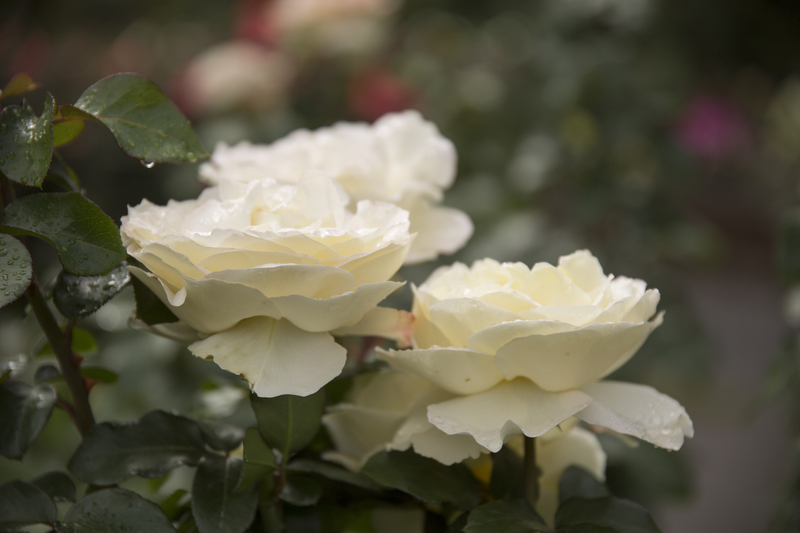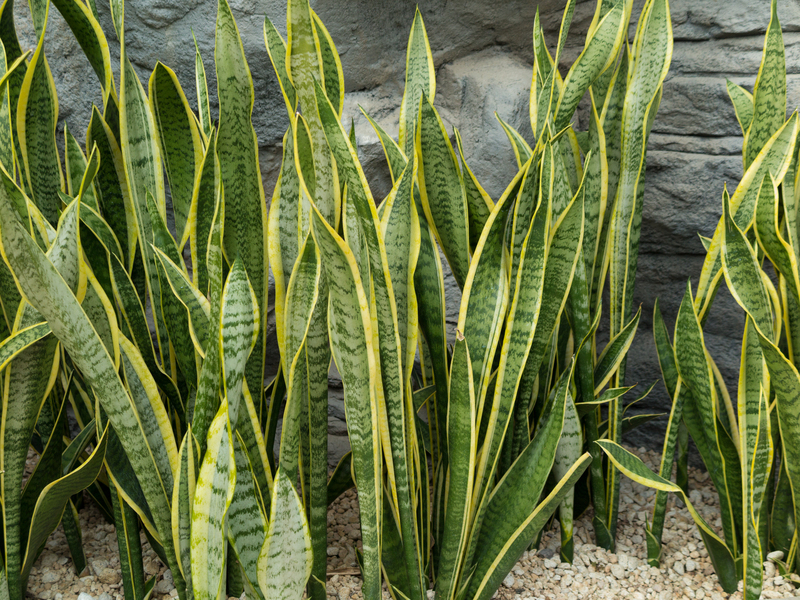Growing a Garden Tailored for Dogs
Posted on 13/06/2025
Growing a Garden Tailored for Dogs: Pet-Friendly Landscaping Ideas
Are you dreaming of a lush, green sanctuary while ensuring a safe and fun space for your four-legged friend? Growing a garden tailored for dogs is all about balancing beauty, safety, and utility. Whether you have a playful pup or a gentle senior, designing a dog-friendly garden lets you create an outdoor haven for both humans and canines. In this comprehensive guide, we'll explore the essential steps, best plants, landscape hacks, and expert advice for a pet-safe paradise.
Why Consider a Dog-Friendly Garden?
Dogs spend plenty of time outdoors, digging, sniffing, and sometimes nibbling on plants. But not every plant or landscaping material is safe for your pet. Designing a garden with dogs in mind improves their safety, reduces stress for pet owners, and can even address common problems like destructive digging.
- Healthier environment: Avoid toxic plants, pesticides, and landscape hazards.
- Stimulation and exercise: Provide your pup with places to explore, run, and play.
- Minimize behavioral issues: Offer alternatives to digging, chewing, or escaping.

Planning: The Foundation of Growing a Dog-Centric Garden
Before planting, observe your dog's habits and temperament. Think about their favorite spots, digging locations, and how they interact with existing plants. Dog-safe gardens can be customized for different breeds, sizes, and activity levels.
Key Questions to Consider
- Does your dog love to dig or chew on foliage?
- Is your yard exposed to full sun, partial shade, or a mix?
- Do you need sturdy boundaries or fencing?
- Will your dog need shaded areas or water features to cool off?
Sketching Your Layout
A well-designed canine-friendly garden includes dedicated zones for various activities:
- Play Areas: Open spaces for running, fetch, or agility activities.
- Resting Spots: Shady nooks or cozy beds for naps.
- Potty Corners: Out-of-the-way zones for bathroom needs, preferably using easy-to-clean materials like pea gravel or turf.
- Paths: Allow paths to help dogs navigate--mulched or stone walkways work well.
Choosing Dog-Safe Plants: A Crucial Step
Not all garden favorites are safe for pets. Some, like azaleas, lilies, or sago palms, are toxic even in small amounts. Instead, pick pet-friendly plants that thrive in your climate and won't harm curious canines.
Best Plants for a Dog-Friendly Garden
- Herbs: Basil, thyme, parsley, rosemary - all non-toxic and useful for your kitchen.
- Flowers: Sunflowers, marigolds, violets - cheerful blooms safe for pets.
- Ground Covers: Creeping thyme, elfin thyme, Irish moss, clover.
- Shrubs: Spirea, bottlebrush, camellia, hawthorn.
- Grass: Ornamental varieties such as fescue or zoysia hold up well to paw traffic.
Pro Tip: Make sure any garden plants for dogs you select are also deer- and rabbit-resistant if you live in areas with local wildlife.
Plants to Avoid
- Oleander
- Azalea
- Sago palm
- Lilies
- Foxglove
- Nightshade family (tomato leaves, potatoes, eggplant foliage)
- Yew
- Rhododendron
Designing for Durability & Safety
Active dogs can be tough on landscaping. A dog-oriented garden should withstand paws, claws, and the occasional roll in the grass.
Hardscaping and Surfacing
- Pathways: Use flagstones, smooth pebbles, or decomposed granite. Avoid mulch made of cocoa shells (toxic to dogs) or sharp stones that can hurt paws.
- Lawns: Select resilient grass like Bermuda, rye, or fescue, and repair "dog spots" (burned patches) with overseeding.
- Decks & patios: Offer shady spots for cooling off and keep surfaces splinter-free.
- Fencing: Choose tall, sturdy fencing--a minimum of five feet for most breeds. Fill gaps under fences to prevent escape.
- Edging: Use stone or brick borders for garden beds, so plants are protected from trampling.
Avoiding Garden Hazards
Even the most enthusiastic dog-lovers can overlook common hazards. Growing a garden tailored for dogs involves more than just plant selection--be vigilant about toxic chemicals, sharp tools, and safe storage.
Common Dangers in Traditional Gardens
- Chemical fertilizers and pesticides - Go organic or use pet-safe versions.
- Mulch - Skip cocoa mulch and opt for pine, cedar, or hemlock pet-safe mulches.
- Compost bins - Fence or cover to prevent dogs from rooting inside (some molds and foods are dangerous).
- Sharp-edged garden tools - Store securely out of reach.
- Standing water - Prevent mosquito breeding and accidental drinking.
- Wild mushrooms - Remove promptly, as many are toxic.
Creative Features: Ideas for an Enriching Dog Garden
Think beyond safety--make your garden a fun, enriching space! Dogs thrive with mental and physical stimulation.
Exciting Dog Garden Features to Try
- Agility courses: Add tunnels, low jumps, or weaving poles for active breeds.
- Doggy sandbox: Give diggers their own space, filled with sand or soil, and teach them to use it.
- Water features: Pet-safe fountains, splash pads, or ponds (with shallow edges and filters).
- Hideaways: Create living willow huts, raised decks, or shaded "dens" for privacy and rest.
- Edible gardens for pets: Grow safe herbs or veggies--like carrots, blueberries, or green beans--for healthy treats.
- Window-view platforms: If you have a fence, install a viewing "bubble" so dogs can see outside and satisfy their curiosity.
Maintaining a Dog-Happy Landscape
A dog-friendly back yard needs regular care, just like any garden. Dogs love consistency, and your landscape will thank you for it.
Practical Maintenance Tips
- Clean up waste quickly: Scoop daily to reduce odors, prevent fungus, and keep lawns green.
- Rinse areas: If your pup urinates on the lawn, flush with water to minimize "burning."
- Mend garden beds: Reinforce borders and replace trampled plants as needed.
- Monitor fencing and gates: Check regularly for weak spots or holes.
- Check for hazards: Monitor for hazardous mushrooms, sticks, or foreign items brought in by wildlife.
- Seasonal changes: Add cloches or covers to protect delicate plants in winter, and provide ample shade and water in summer.
Dog Garden Inspiration: Example Layouts
Need specific ideas? Here are two popular dog garden layouts for homes of any size:
Small Urban Yards
- Artificial turf: Easy cleanup, more robust than real grass
- Vertical gardens: Raised beds or wall planters for non-toxic herbs and flowers
- Toy bin: Keep outdoor toys stored for playtime
- Shade sail and water bowl station
Spacious Suburban Gardens
- Running lane: Install a path along the fence for natural patrols
- Dog pond: A shallow pond with a clean filter for cooling off
- Sun/shade mix: Plant shade trees with non-toxic ground cover
- Edible patch: Section off a supervised area with dog-safe veggies
Bonus Tips: Training Your Dog to Respect the Garden
Training is key for harmony between dogs and plants. Leverage positive reinforcement to teach boundaries:
- Use garden borders or low fencing to signal off-limits beds.
- Reward calm behavior in planted areas--use treats or praise.
- Discourage digging by planting robust ground covers or providing dedicated sandboxes.
- Supervise until habits are set.

Frequently Asked Questions About Canine Gardens
- Q: How can I protect my vegetable garden from my dog?
A: Install raised beds, use garden nets or low barriers, and train your dog to avoid the area unless supervised. - Q: Are there any dog-safe lawn fertilizers?
A: Yes! Look for natural or organic brands clearly labeled as pet-safe. Avoid artificial fertilizers with pesticides. - Q: My dog keeps trampling flowerbeds; what can I do?
A: Add clear borders, plant dense groundcovers, or use decorative fencing until the dog forms new paths. - Q: What should I do if my dog chews on a plant?
A: First, identify the plant for toxicity. Remove any dangerous species and consult your vet if symptoms occur.
Conclusion: A Garden Grown for Everyone
Growing a garden tailored for dogs is a rewarding project. With the right plants, smart layout, and a bit of training, your yard can be a paradise for both paws and people. When planning dog-safe landscaping, always consider your pup's habits and needs as equal to your own. In the end, your beautiful, safe garden will reward you with wagging tails and worry-free outdoor enjoyment.
Ready to get started? Draw up your garden layout, make a pet-safe plant list, and enjoy watching your furry friend thrive among the flowers and greenery!





